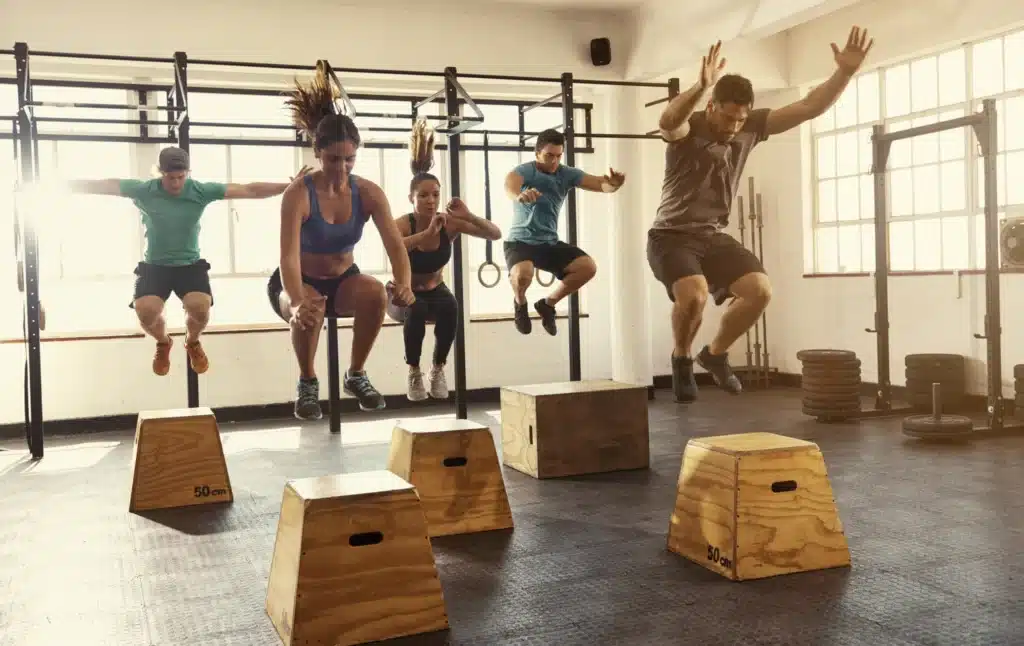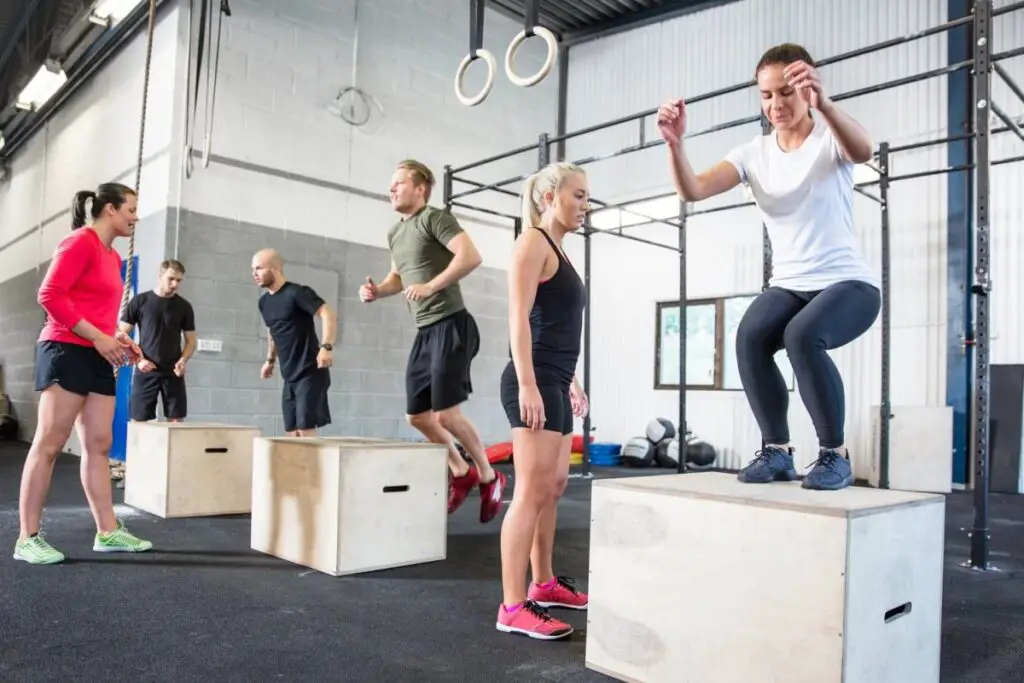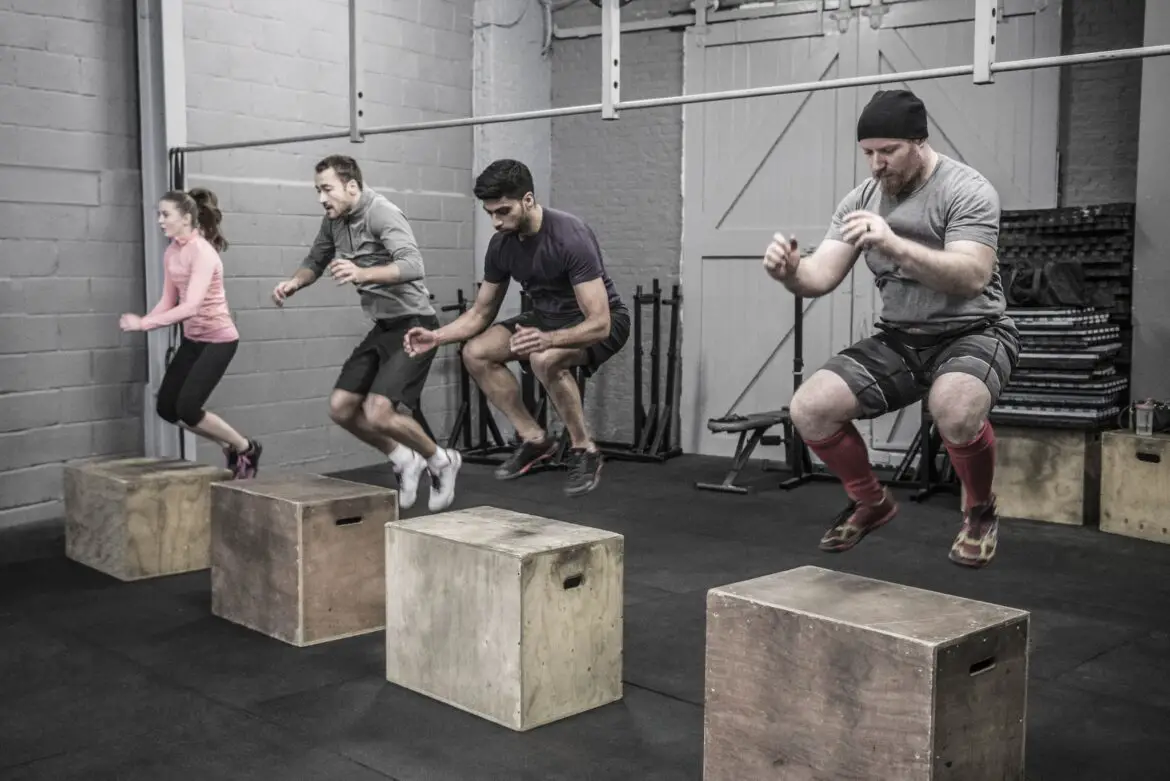Introduction
A CrossFit Box is more than just a gym; it’s a vibrant community, a temple of physical fitness, and a crucible for personal transformation. In the world of fitness, CrossFit Boxes stand out as unique spaces dedicated to a distinctive and intense training regimen known as CrossFit. These facilities are specially designed to accommodate the rigorous workouts and functional movements that are the hallmark of CrossFit training.
At its core, a CrossFit Box is a sanctuary where individuals of all fitness levels come together to push their limits, break through barriers, and foster a sense of camaraderie. Unlike traditional gyms, CrossFit Boxes emphasize a sense of community and mutual support. They often feature an array of specialized equipment, such as barbells, kettlebells, rowing machines, and pull-up bars, to facilitate the wide variety of exercises and workouts prescribed in CrossFit programming.
In this introduction, we will delve deeper into the world of CrossFit, exploring its origins, philosophy, and what makes a CrossFit Box a unique and powerful space for fitness enthusiasts. Whether you’re a seasoned CrossFitter or new to the concept, this exploration will shed light on the essence of this fitness movement.
A CrossFit Box isn’t just a place to lift weights or run on a treadmill; it’s a training environment where sweat, determination, and dedication are celebrated. CrossFit itself is a fitness regimen that combines elements of weightlifting, high-intensity interval training, gymnastics, and functional movements. It’s designed to be scalable, making it accessible to people of all fitness levels, from beginners to elite athletes.

Why is a CrossFit gym called a box?
The Box is a crossfit gym. It’s called a box because it’s typically in a warehouse-type space. Instead of seeing the machines you see in a typical gym, you’re more likely to see stacks of weights, barbells, pull-up bars and lots of open space.A CrossFit gym is commonly referred to as a “box” due to its distinct and utilitarian setup. The term “box” originated from the early days of CrossFit when the founder, Greg Glassman, often set up his training sessions in industrial or warehouse-type spaces. In these settings, the emphasis was on functional fitness and a minimalist approach to equipment.
The term “box” conveys the idea of a no-frills, no-nonsense fitness environment. When you walk into a CrossFit box, you won’t find rows of fancy machines or mirrored walls. Instead, you’ll encounter an open space with essential equipment like weights, barbells, kettlebells, pull-up bars, and medicine balls. This simplicity in design reflects the core philosophy of CrossFit, which prioritizes functional movements and high-intensity workouts over machine-based exercises.
What is the box at the gym called?
17 Plyometric Box Exercises You Need To Be Doing Fitness small
A plyometric box, otherwise known as a plyo box or jump box, is a box or platform used to perform exercises. Plyo boxes come in different sizes, shapes and types, but most are simple rectangle box shapes made from durable and high strength materials.The box used for exercises in a gym is typically called a “plyometric box” or simply a “box.” It is a versatile piece of equipment used for various plyometric exercises and can also be referred to as a “plyo box” or “jump box.” Plyometric boxes come in various sizes, shapes, and materials, but they are typically constructed as durable and sturdy platforms, often in the shape of a rectangular box. These boxes are designed to withstand the impact of exercises like box jumps, step-ups, and other explosive movements commonly used in fitness and athletic training. They are an essential tool for developing power, agility, and overall lower body strength in many workout routines.
What is a box exercise?
Plyometrics, or jumping exercises, push your muscles to the max, helping increase your power, strength, and speed. Box jumps are a quintessential plyometric move where you jump from the floor up onto an elevated surface, like a box. This exercise is high impact, targeting your: quads. Glutes.
A box exercise, specifically referring to box jumps, is a type of plyometric exercise that involves jumping from the floor onto an elevated surface, typically a sturdy box or platform. This exercise is designed to challenge and improve various aspects of physical fitness, including power, strength, and speed.To perform a box jump, you start from a standing position, then bend your knees and swing your arms for momentum before explosively jumping off the ground. The goal is to reach the top of the box with both feet and land softly on the platform. Box jumps are considered a high-impact exercise and engage several muscle groups, with a primary focus on the quadriceps (front thigh muscles) and glutes (buttocks). They also require coordination and balance, making them an effective exercise for improving athletic performance and overall lower body strength. Box jumps are commonly used in strength and conditioning programs, as well as in sports training to enhance an athlete’s explosive power.
What is the difference between Boxfit and boxercise?
One of the most common questions we get asked here at ETC is do we teach boxing or box fit… and what is the difference? Box fit which is also commonly known as boxercise incorporates some aspects of boxing and associated techniques, however, it is primarily a cardio-focused program.BoxFit and Boxercise are two fitness programs that incorporate elements of boxing, but they have distinct differences in terms of their focus and goals.
BoxFit:
Focus: Boxfit is primarily a fitness program with an emphasis on cardiovascular conditioning, overall fitness, and endurance.
Workouts: Boxfit classes often include boxing-inspired exercises like shadowboxing, punching bags, mitt work, and footwork drills.
Intensity: While Boxfit can be challenging and provide a full-body workout, it is more focused on burning calories and improving fitness levels rather than teaching the technical aspects of boxing.
Audience: Boxfit is suitable for individuals of various fitness levels and is often chosen by those looking for an engaging and high-intensity workout without the intention of becoming competitive boxers.
Boxercise:
Focus: Boxercise is a fitness program that draws inspiration from boxing but is primarily geared toward improving physical fitness, toning muscles, and enhancing coordination.
Workouts: Boxercise classes involve boxing drills and movements, such as jab-cross combinations and defensive techniques, incorporated into a fitness routine.
Technique: While Boxercise does include some boxing techniques, the emphasis is more on correct form and technique than on intense cardiovascular conditioning or sparring.
Audience: Boxercise is suitable for a wide range of participants, including those interested in learning basic boxing skills in a non-contact, fitness-oriented environment.
Is a box good for weight loss?
In addition, boxing works on both strength and cardiovascular fitness, which increases calorie burn. People who box frequently will naturally burn many calories, leading to overall weight loss, especially when participants pair boxing workouts with a healthy diet.Yes, boxing can be an effective activity for weight loss.
There are several reasons why boxing can contribute to weight loss.
Calorie Burn: Boxing is a high-intensity workout that involves a combination of aerobic and anaerobic exercises. It can elevate your heart rate significantly, leading to the burning of a substantial number of calories during a session.
Full-Body Workout: Boxing engages multiple muscle groups, including the legs, core, back, and arms. This comprehensive muscle engagement not only strengthens your body but also increases the overall calorie expenditure during and after the workout.
Cardiovascular Fitness: Boxing improves cardiovascular fitness, which enhances your body’s ability to burn calories efficiently. It can help increase your stamina and endurance, allowing you to sustain longer and more intense workouts.
Metabolism Boost: High-intensity workouts like boxing can boost your metabolism, leading to increased calorie burning even when you’re not exercising. This effect can contribute to weight loss over time.
Stress Reduction: Boxing can be a great stress reliever. Reduced stress levels can help prevent overeating or emotional eating, which can contribute to weight loss.
How many times a week should a beginner box?
. If you are a novice learning the ropes, then twice a week would be considered the minimum number of days per week to box.The frequency of boxing training for a beginner can vary depending on several factors, including individual goals, fitness level, and availability.
However, as a general guideline:
Twice a Week: For beginners who are just starting out and learning the fundamentals of boxing, training twice a week can be a reasonable starting point. This frequency allows you to build a foundation of skills, work on technique, and gradually increase your stamina and strength.
Three Times a Week: As you become more comfortable with the basics of boxing and start to develop better endurance and coordination, you can consider increasing your training frequency to three times a week. This allows for more consistent progress in skill development and fitness.
Four or More Times a Week: More experienced boxers or individuals with specific goals, such as competitive boxing or rapid fitness improvement, may train four or more times a week. However, this level of frequency should be approached with caution and should be balanced with proper rest and recovery to avoid overtraining.
How many months to learn boxing?
It may take up to 6 months or more to learn the fundamentals of this sport through one of the professional boxing classes nearby.The time it takes to learn boxing can vary widely depending on several factors, including your starting fitness level, how frequently you train, the quality of instruction, and your individual aptitude for the sport. Learning the fundamentals of boxing typically involves developing proper technique, conditioning, and understanding the basic strategies of the sport.
Here’s a rough breakdown:
Fundamental Skills: It often takes a few months of consistent training (2-3 times a week) to grasp the fundamental boxing skills, including proper stance, footwork, basic punches (jab, cross, hook, uppercut), and defensive maneuvers (blocking, slipping, and ducking).
Conditioning: Building the necessary endurance, strength, and cardiovascular fitness for boxing may take several months, depending on your initial fitness level. Conditioning is an ongoing process that continues as you advance in the sport.
Sparring and Practical Experience: Getting comfortable with sparring and applying your skills in a practical setting can take additional time. Some individuals are more confident in the ring sooner than others.
Competitive Boxing: If your goal is to compete in amateur or professional boxing matches, the timeline for becoming a competent fighter can be longer, often years of training and experience.
Does boxing reduce belly fat?
Boxing is a great way to fight belly fat because it is not only exercise that uses all muscle groups but also gives you cardio benefits. Boxing could be the ultimate belly fat workout. The best part of it is that you can do it at the comfort of your home or office.Yes, boxing can be an effective way to reduce belly fat and promote overall fat loss. Here’s why boxing is beneficial for targeting belly fat.
High-Intensity Cardio: Boxing involves intense cardiovascular workouts that elevate your heart rate and increase calorie expenditure. This helps create a calorie deficit, which is essential for burning fat, including belly fat. Boxing workouts can be an efficient way to shed excess calories and lose weight.
Full-Body Engagement: Boxing engages multiple muscle groups, including the core, legs, arms, and back. This comprehensive muscle engagement not only strengthens and tones your entire body but also burns more calories compared to exercises that isolate specific muscle groups.
Core Activation: Boxing requires strong core stability and rotation, which can help strengthen the muscles in your abdomen. A strong core can improve posture and contribute to a leaner appearance around the waistline.
Stress Reduction: Boxing can be an effective stress reliever. Lowering stress levels can be beneficial for weight loss because high stress can lead to overeating, particularly of unhealthy foods that contribute to belly fat.
Consistency and Intensity: Consistently engaging in boxing workouts and maintaining intensity over time can lead to long-term fat loss, including reduction in belly fat.

Conclusion
A CrossFit Box is not merely a conventional fitness facility; it is a dynamic and transformative space that embodies the essence of CrossFit. These specialized gyms, often located in warehouse-type settings, serve as the epicenter of a fitness revolution. CrossFit Boxes are where individuals of all fitness levels converge to engage in high-intensity workouts that challenge their physical limits and ignite their competitive spirit.
The term “box” is symbolic of the no-frills, no-nonsense approach that characterizes CrossFit. Inside, you won’t find rows of complex machines but rather open spaces adorned with essential equipment like barbells, kettlebells, pull-up bars, and more. Here, community is paramount, as CrossFitters bond over shared sweat and achievements, fostering an environment of mutual support and camaraderie.
A CrossFit Box is more than just a gym; it’s a place where individuals transcend their boundaries, both physically and mentally, to become the best versions of themselves. It’s a place where dedication, discipline, and determination converge to create a unique and empowering fitness experience, making it a transformative space in the world of exercise and well-being.

